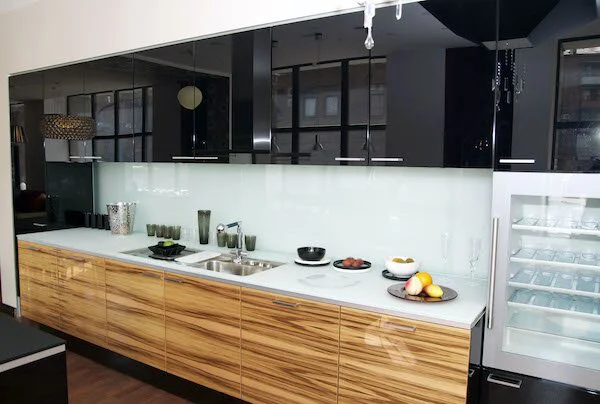9 Steps to Get Your Custom Kitchen Remodel
Want a new kitchen? We explain the entire 9 step process to get your custom kitchen model. We explain everything from kitchen design to final installation.
Step 1: Kitchen Design - Ideas, Budget and Timeline
When you decide to have your kitchen remodeled, you need to have an idea or a vision of what you want your kitchen to look like. You have to consider whether you are doing a full remodel or just upgrading components of the kitchen. There are already tons of design ideas you can find online to draw inspiration from. Write down or save these ideas because you will have to consult with a designer later on whether these designs are fit for your kitchen.
Another factor that will affect your kitchen remodeling is your budget. If you have more flexibility when it comes to the budget, you will have more room for any changes during the actual remodeling stage. However, if you are tight on budget, you have to be more mindful of the design and the materials that you will have to use. For example, when it comes to cabinetry, you might want to stick to stock cabinets to stay within your budget.
How Many weeks Does it Take to Renovate a Kitchen?
Usually, remodeling takes about 6 to 12 weeks but the duration of a kitchen remodel depends on the size of your kitchen and the overall scope of the project. Larger kitchens with many customizations will take longer. There may also be unforeseen delays that can affect the timeline.
The more complex the project is, the longer it will take to finish. So in the planning stage, you have to exactly lay down your ideas in order to calculate how long it would take.
Step 2: Measure the Kitchen Area
The next step in kitchen remodeling is to measure the whole area. The kitchen designer needs to know the right measurements of your kitchen in order to determine what elements will go where. Your designer will need to get the measurements of the following:
- Floor to windowsill
- Windowsill to top of the window
- Top of the window to ceiling
- Floor to ceiling
- Horizontal measurement of the walls
Step 3: Meet With The Kitchen Designer and Agree on the Design
Once your designer has measured the kitchen and listened to your design ideas they will need some time to model up your kitchen design using 3D kitchen design software.
Once the designer has completed an initial design, she will setup a meeting with you to go through their initial design and interpretation of your ideas.
The designer can point out the advantages and disadvantages of different choices. They're also knowledgeable about new trends, technology, and materials that could really enhance the design of your new kitchen.
Working with a great kitchen designer will save you time, effort, and money when it comes to remodeling your kitchen which is why it's important that you find a great designer.
Step 4: The Designer Will Order the Manufacture of the Kitchen Cabinets & Cutting the Counter Top (You May Have To Pay a Deposit at This Stage)
Agreeing on the final design of your kitchen may take a few iterations. The more complex and expensive your design the more likely you'll take your time to ensure the design is exactly what you want.
Once you've locked in a final design your designer can order the manufacture of the kitchen cabinets. Usually they will require a deposit at this stage. Cabinets define the style of the kitchen as these are what people see first when walking into the room. You might want to choose great quality materials for to guarantee that they will last long.
At this stage your designer will also order the new countertop which has to be cut to fit. Countertops can be made out of ceramic tiles, synthetic materials, granite, and marble.
Step 5: Meet with The Kitchen Designer and Order Your Appliances, Fixtures, and Fittings (You Could Do this Step Yourself)
When the cabinets and countertops have been ordered, the next step is to order other kitchen elements such as appliances, fixtures, and fittings.
You can do this on your own especially if you want to be more hands-on with the project.
But if you are unsure, your kitchen designers will have more connections and be able to give more options that will fit your budget and your design.
Step 6: The Kitchen Renovator Will Organise a Time to Demolish The Old Kitchen - Mainly Removing the Existing Cabinets
Once the materials, appliances, fixtures, and fittings are finalized, the demolition process will begin. The contractor will remove the old appliances and cabinets first and other old materials. This is gruelling work and involves a lot of physical effort but is not an entirely complicated process. If you want to do the demolition yourself, you have to wear safety gear to protect yourself and have the necessary equipment to dispose the debris and other discarded materials.
Once the cabinets and other materials are removed, the next thing to remove are other structures that might be needed to be taken down to fit your overall kitchen design.
Homeowners who are going for a larger kitchen may have some of their walls removed. Adding, removing, or replacing windows is also another part of this stage.
Step 7: The Kitchen Renovator Will Organise To Lay The Floor
The next step in your kitchen remodeling project is installing the flooring. This is one of the last steps before assembling the plumbings, cabinets, and appliances.
This stage is reserved towards the end to prevent the new flooring from being damaged due to the demolition and heavy work done before.
In kitchen remodeling, a good rule of thumb is to build the room up first before getting to the bottom.
The length of time to lay the floor depends on the type of flooring you want to install for your kitchen.
Step 8: The Kitchen Renovator Will Organise Electrical and Plumbing Services
At this point, the walls are still exposed which is the perfect time to deal with the plumbing and electrical wiring in the kitchen. Depending on your kitchen remodeling plans, you will probably replace or reorganize the plumbing and wirings.
If you don’t plan on changing the layout of your kitchen, you still have to inspect these elements because they might be outdated already and need to be replaced to prevent future problems.
It is best to contact a professional plumber and electrician for this stage because dealing with these is dangerous. Even a slight mistake in electrical wirings and plumbing can result in malfunctioning appliances and leaks.
Homeowners who are changing the overall layout of the kitchen should definitely hire a professional to ensure that the plumbing and wiring are all set safely and have everything inspected once more before moving on to the last stage.
After these are done, you may already put up the drywall and have your walls and ceiling painted.
Step 9: The Kitchen Renovator Will Organise The Cabinets, Counter Top, Splashback and Appliances Are Installed
The final stage of a kitchen remodel is installing the cabinets, countertop, splashback, and appliances.
Installing cabinets can take one to five days to finish depending on whether or not there are modifications needed. Countertops are installed after the cabinets because they rely on the absolutely levelled base cabinets which serve as anchors. Granite and marble countertops take longer to install while laminate is easier to install.
The kitchen backsplash can take two to three days to install depending on the material and style you choose. Standard-shaped tiles are easier to install while irregular shapes will take longer to finish.
Last to install are the appliances and plumbing and lighting fixtures. Overall, the installation can take up to five days. The plumber will set up the water supply for the refrigerator and dishwasher and also install the sink and faucet. On the other hand, the electrician installs the light fixtures and makes sure that all outlets and switches are working properly.
Once all installations are done, the kitchen remodeling project is complete and you can now enjoy your kitchen.

